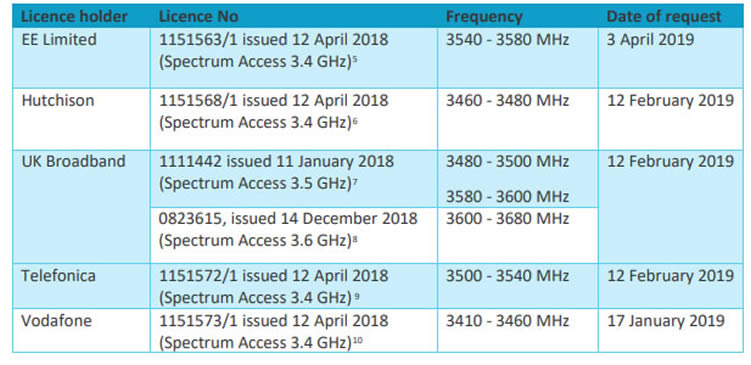Michelle Donegan is a tech writer who has covered the communications industry for more than 25 years on both sides of the pond. Having worked for various industry titles, including Communications Week International, Total Telecom and Light Reading, she specializes in mobile network technology trends.
In response to requests by the UK’s four mobile operators EE, O2, Three and Vodafone, Ofcom has proposed making technical changes to their spectrum access licenses in 3.4 GHz, 3.5 GHz and 3.6 GHz frequencies in order to facilitate the deployment of Active Antenna Systems (AAS). A public consultation on the regulator’s proposals is now open and will close on May 19.
The 3.4 GHz-3.8 GHz band is prime spectrum for 5G services in the UK, and licenses in the 3.4 GHz- 3.6 GHz band were awarded to the four operators via an auction in April last year.

AAS are one of the technologies that will help to boost capacity in 5G networks as well as in current 4G networks. AAS enables massive multiple input multiple output (MIMO), which increases capacity and can result in better user experiences for consumers particularly in densely populated or busy areas. AAS also can adapt to changing network conditions to improve capacity and spectral efficiency through techniques such as beamforming.
The UK operators have asked that their licenses in these bands be amended to support AAS. The changes would bring the licenses in line with the European Union’s Harmonization Decision on the 3.4 GHz-3.8 GHz band, which sets out technical requirements for AAS. Ofcom’s provisional view is that it is “minded to grant these variation requests.”
Details
The nitty-gritty details are explained in Ofcom’s consultation document. But in a nutshell, the operators have requested the following changes:
- Add to the special conditions relating to Radio Equipment to accommodate new total radiated power (TRP) in-block and out-of-block power limits for active antenna base stations (AAS).
- Raise the terminal power limits from 25 dBm to 28 dBm.
- Remove the additional band edge requirement above 3605 MHz and insert a new requirement at 3800 MHz and above.
Paving the Way for High-Capacity 5G Services
Ahead of planned commercial 5G launches later this year, UK operators have been testing massive MIMO as well as 5G in their recently acquired 3.4 GHz-3.6 GHz spectrum.
These include:
- O2 is trialling massive MIMO using its recently won 2.3 GHz spectrum in two locations in London.
- Vodafone conducted a massive MIMO trial using 3.4 GHz spectrum in April last year.
- Meanwhile, EE is testing 5G across 10 sites in London using its 3.5 GHz spectrum.
50% off Lyca Mobile’s Pay As You Go plans
Lyca Mobile’s cheap Pay As You Go deals include roaming and international minutes.









